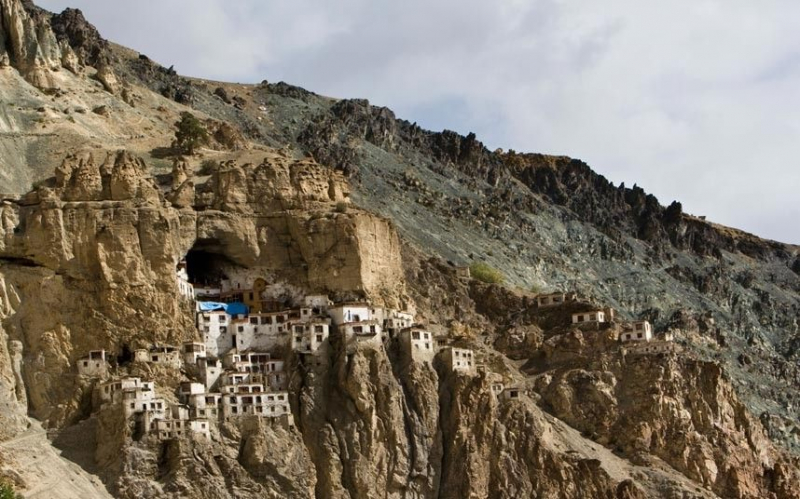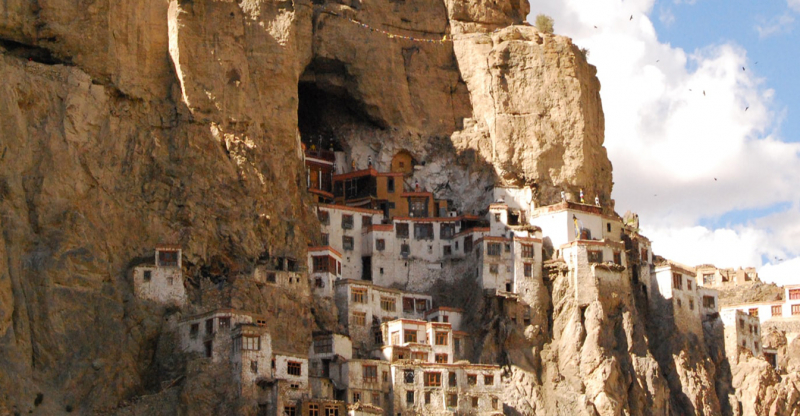Phugtal Gompa
In the isolated Lungnak Valley in southern Zanskar, in the Himalayan region of Ladakh, in Northern India, is where you'll find the Buddhist monastery known as Phuktal Monastery or Phuktal Gompa. One of the few remaining Buddhist monasteries in Ladakh that can only be accessed on foot is this one. During the warmer months, supplies are delivered to the monastery on horses, donkeys, and mules; during the freezing winters, they are conveyed via the frozen Zanskar River. At the now, it is a day's walk from Village Cha or Village Khangsaar, the end of the road coming from Padum, however a road is anticipated to be built up to the monastery. With the assistance of participants of the Global Himalayan Expedition (GHE), solar energy was installed at the Phugtal monastery in 2016.
It is constructed like a honeycomb into the cliffside. A significant tributary of the Lungnak River has a lateral gorge that includes the cliff (Lingti-Tsarap River). In addition to the original cave and the sacred spring, which are both preserved, the monastery presently includes a major temple, prayer halls, a library with rare religious writings, apartments and living quarters, teaching facilities, a kitchen, and other buildings. A little over 70 monks live there. There is a stone inscription that commemorates Alexander Csoma de Krös' time in Phuktal between 1826 and 1827, when he visited Ladakh and began work on the first English-Tibetan dictionary.
Location: Zanskar, Kargil district, Ladakh, India

















